Consumption due to toilet flushing
Reduce toilet water consumption: Your start to a more sustainable life
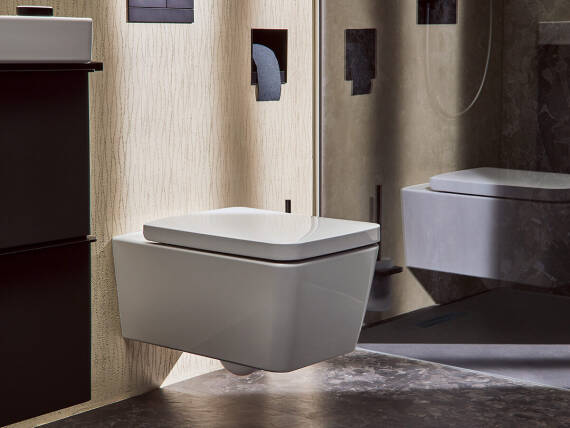
How much water does a toilet flush use?
Sustainability and mindfulness start in our everyday lives. It's often about the little things that add up to big things – the more people pay attention to them around the world. Today we explain how much water a dishwasher can use and how you can reduce the amount of water you use.Effectively reduce toilet water consumption.
But first we ask ourselves: Why is this important?
Older toilet flush valves can Consume up to 14 liters of water per flush. Even one person uses a lot of water. If we extrapolate this figure to a family of several people, this is an enormous amount of water used just to flush the toilet, as this brief overview shows:
Families with four people in Germany
We assume that
- the toilet cistern is flushed four times a day per person, i.e.16 times a day
- the flush tank of the toilet is an older model and these ten liters per rinse consumed, i.e. 160 liters (0.16 cubic meters) a day,58,400 liters (58.4 cubic meters) per year.
- 1 cubic meter of water cost around EUR 1.79 net in 2023. Added to this is the fee for wastewater in the amount of EUR 2.00 net per cubic meter. The rounded 3.80 EUR net per cubic meter however, these prices are rising continuously;
- per day for this household EUR 0.68 net costs are incurred, i.e.per year EUR 248.20.
We can all save water by flushing the toilet without sacrificing our sense of well-being. And we should, because we consume precious drinking water with every flush.
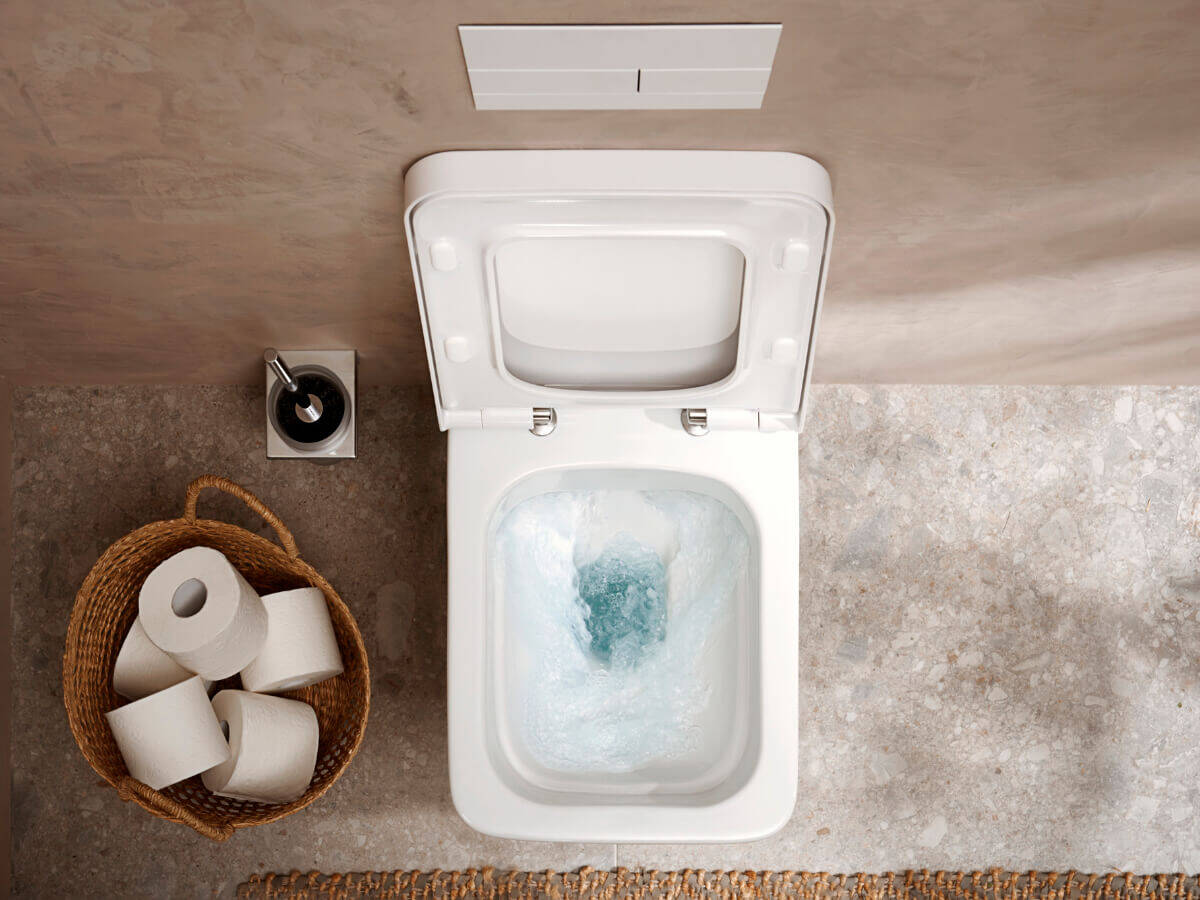
Less water consumption: toilet cistern as an efficient centerpiece
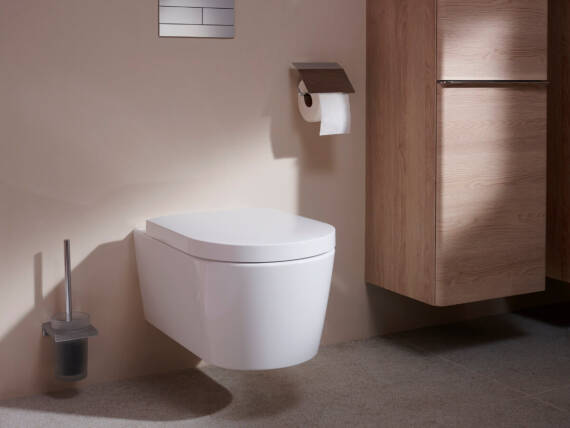
Do you want to save water? Then you shouldn't flush the toilet - right? That would be the most effective, but also the most unhygienic option. That's why we suggest a good alternative: Swap the conventional one for a modern flushing tank with low water consumption. This is an investment that really pays off.
You can save a lot of water if you use a timely and efficient water supply. Dual flushing with two buttons or a start/stop button contribute to this conservation.
As such solutions only consume around three to six liters per rinse. For our calculation example from above, this means the following:
Again, we assume that our family flushes 16 times at five liters of consumption per keystroke. They consume 80 liters per day, just under 29,200 liters (29.2 cubic meters) per year. Our exemplary family from Germany now pays just under 88 EUR for their toilet flushing water consumption per year.*
Our family not only saves money throughEUR 100 per year in water costs, better still, theysaves approx. 13 cubic meters of precious drinking water.
Tip: It is advisable to clean and descale the water tank at least once a year. This will keep it working for longer and minimize the risk of leaks, through which liters of water run unnoticed and, above all, unused into the sewage system. However, with a new economical drainage tank you also avoid this risk;
Innovative technologies: save even more water with a modern toilet

In our calculation example, we have only considered the "usual" use of a toilet in terms of water consumption. But there are many more reasons to flush. Above all, the regular cleaning of ceramics or the lengthy rinsing process. And so, in addition to economical rinsing, there are another small lever that you can set in motion.
Modern flushing valves and intelligent water supply systems optimize the flushing performance with only 4.5 litres of water consumption per flush and certain designs, such as the rimless design of hansgrohe toilets. This modern design also reduces the amount of cleaning required. This means that there is no need for frequent flushing until the toilet is really clean. This also saves water.
Efficient water use is also a special feature of hansgrohe toilets. Enabled by a well thought-out internal geometry, in combination with the appropriate storage tank, it can support you in the economical and environmentally conscious use of the precious resource of water.
- Rimless EluPura WC: Thanks to the clever internal geometry and modern flushing valves, you can use as little as 4.5 liters of water per flush for thorough cleaning. It is also quick and easy to clean.
- Comfort with AquaHelix Flush of the EluPura WC: The toilet scores points for its very quiet flushing and water vortex technology. It achieves excellent results with just 4.5 liters of water per flush.
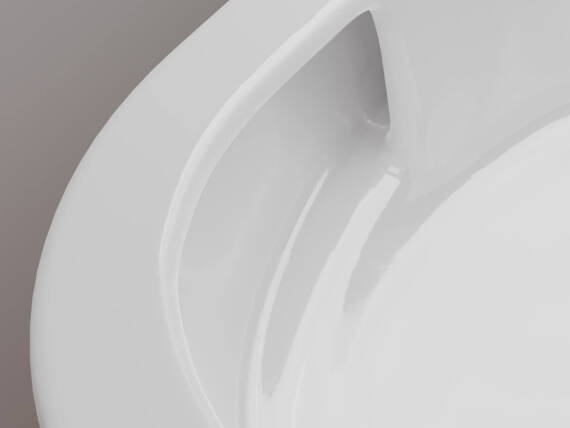
The importance of the glaze for a toilet
Durable and environmentally friendly glazes have clear advantages in the area of cleanliness and hygiene because you can clean the toilet more easily and quickly with less water consumption.
When you choose a toilet from hansgrohe, you can choose from two solutions for effective glazes:
- SmartClean is dirt-repellent and very easy to clean.
- HygieneEffect acts against the multiplication of coli bacteria and salmonella**.
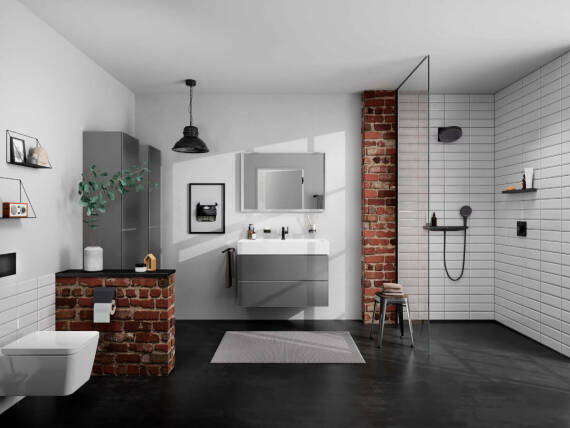
Convinced: Many wins when you effectively save water with the toilet
There are a number of options, live more consciously at home: from the sustainable wooden washbasins to solutions that are not so obvious at first glance. For instance, grey water, which is the wastewater from sinks, bathtubs, showers, and washing machines, can be repurposed for flushing toilets. All you need is a small recycling system.
The truth is, investing in modern, eco-friendly toilets is wise because, aside from gray water and rainwater solutions, each flush utilizes precious drinking water. The savings are straightforward, which is why it's sensible to replace both the toilet and the cistern.
You also pay less if you reduce the water consumption of the toilet. As a result, your investment will pay for itself over time and, in the long term, not only ease your conscience but also your wallet.
* This assumption is based on an average gross price of EUR 3 for drinking water and wastewater per cubic liter;
**Glaze that inhibits bacterial growth on the product (refers exclusively to Escherichia coli ATCC 8739 and Salmonella enterica ATCC 13076, test ISO 22196: 2011-08)
Frequently asked questions about toilets and water consumption
Depending on the flushing cistern and toilet, up to 14 liters of drinking water are discharged into the sewage system per flush.
A very efficient way is a new flushing tank, because with modern solutions such as a dual or economy function, you can reduce water consumption by several liters per flush.
An optimized interior geometry and sensible flushing technologies reduce the toilet's water consumption enormously. In addition, modern toilets are often rimless, which reduces the cleaning effort and thus also the consumption of cleaning water.
Make sure that the toilet is provided with a basic dirt-repellent and/or bacteriostatic glaze. This special glaze prevents the growth of bacteria (except Escherichia coli ATCC 8739 and Salmonella enterica ATCC 13076, according to test ISO 22196: 2011-08), which ensures greater hygiene and lasting well-being in the bathroom.
Grey water includes wastewater from the bath tub, shower, sink or dishwasher and washing machine. With an appropriate recycling system, you can also use it as toilet flush water.

"The big bath" to download
Renovate and build in an environmentally friendly way. In the hansgrohe whitepaper you can find out interesting facts about sustainable bathroom renovation.
Trusted partners